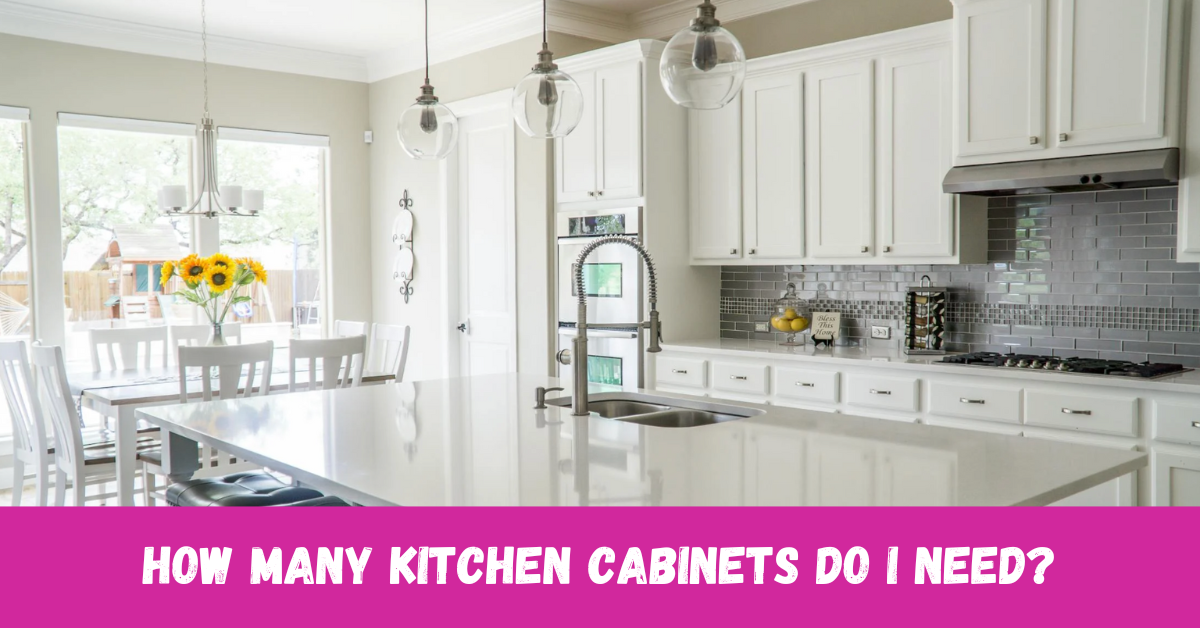When planning a kitchen remodel or renovation, the number of cabinets you need is crucial for both functionality and style. Determining the right number depends on the size of your kitchen, your storage needs, and your personal preferences.
Typically, a standard kitchen requires both upper and lower cabinets to maximize space, but the exact number can vary depending on the design and layout.
How to Determine the Right Number of Kitchen Cabinets?
The number of kitchen cabinets you need will depend on several factors such as your kitchen’s size, the amount of storage required, and the type of items you need to store.
A smaller kitchen might only need a few cabinets, while larger spaces could require multiple cabinets and drawers to keep everything organized.
Factors to Consider When Deciding on the Number of Cabinets
When planning your kitchen cabinetry, several factors play a role in determining the right number of cabinets to meet your needs.
Kitchen Size and Layout
There are several factors to consider when deciding the kitchen cabinets numbers but one of the most critical factors is the size of your kitchen.
For a small kitchen, you may only need a few upper and lower cabinets, while larger kitchens may require more for a balanced look and increased storage capacity.
Keep in mind that the layout will also influence the number of cabinets. For example, an open-concept kitchen might need different configurations than a traditional one.
Storage Needs
Another important factor to consider is your storage needs, as it significantly impacts how many cabinets should be in the kitchen.
Think about the types of items you use daily, such as utensils, pots, plates, and pantry items. Also, think about whether you need deep storage or more easily accessible shelves.
If you’re wondering how much cabinet space you need, take into account your cooking habits and lifestyle. For example, do you cook frequently, or do you prefer a minimalist kitchen setup?
How Many Upper Cabinets Should a Kitchen Have?
Upper cabinets are often used for storage of dishes, glassware, and food items. The number of upper cabinets depends on the available wall space and how much you want to store.
Typically, a kitchen will have two or more upper cabinets, but you might need more depending on your kitchen’s size and storage demands.
How Many Cabinets Does the Average Kitchen Have?
On average, a standard kitchen might have anywhere from 10 to 20 cabinets, depending on the kitchen’s design. This number includes both upper and lower cabinets.
However, it’s important to tailor the number to fit your needs. If your kitchen is smaller, you may need fewer cabinets, but if it’s larger, you may need more to ensure every item has a designated space.
Kitchen Cabinet Storage Planning
Proper planning is essential for making the most of your kitchen cabinet space. Kitchen cabinet storage planning involves determining which cabinets will serve what purpose.
For example, certain cabinets might be better suited for pots and pans, while others are ideal for storing pantry items or small appliances.
- Pantry Cabinets: Often, the larger cabinets near the floor are used to store pantry items.
- Specialized Storage: Drawers for utensils or pull-out shelves for spices.
- Vertical Storage: Use taller cabinets to store brooms, mops, or other cleaning supplies.
Frequently Asked Questions
Are drawers more expensive than cabinets?
Yes, drawers tend to be more expensive than cabinets because they require additional hardware and mechanisms, especially if they have soft-close features. However, they offer better organization and easy access to stored items.
How do I know if my kitchen needs more cabinets?
If you find that your kitchen is cluttered and you’re running out of space to store essentials, it may be time to consider additional cabinets. Organize your kitchen items to assess whether more cabinet space would help you stay organized.
What type of cabinets are best for a small kitchen?
For small kitchens, space-saving cabinets like corner cabinets, pull-out shelves, and vertical storage units can maximize the available area without overcrowding the space. Opt for open shelving or compact drawers to maintain a clean, minimalist aesthetic.
Conclusion
In conclusion, deciding how many kitchen cabinets you need is a balance of storage requirements, kitchen size, and design preferences.
Be sure to plan carefully based on your usage needs, ensuring the kitchen layout supports both functionality and comfort.
With careful thought, you can create a kitchen that is both spacious and organized, whether you’re updating an old space or designing a new one.

